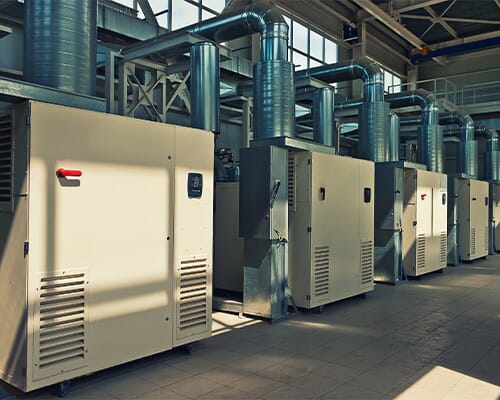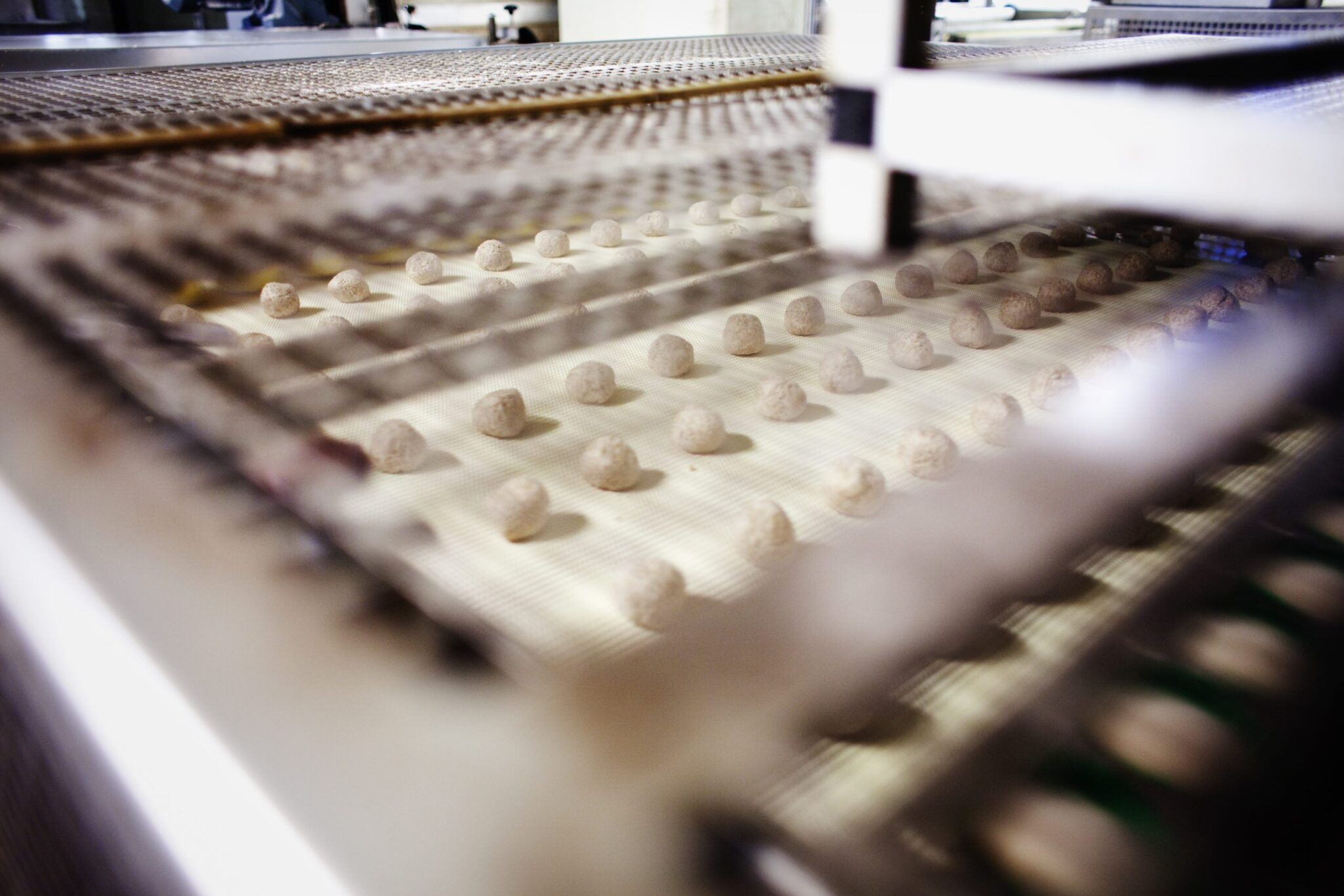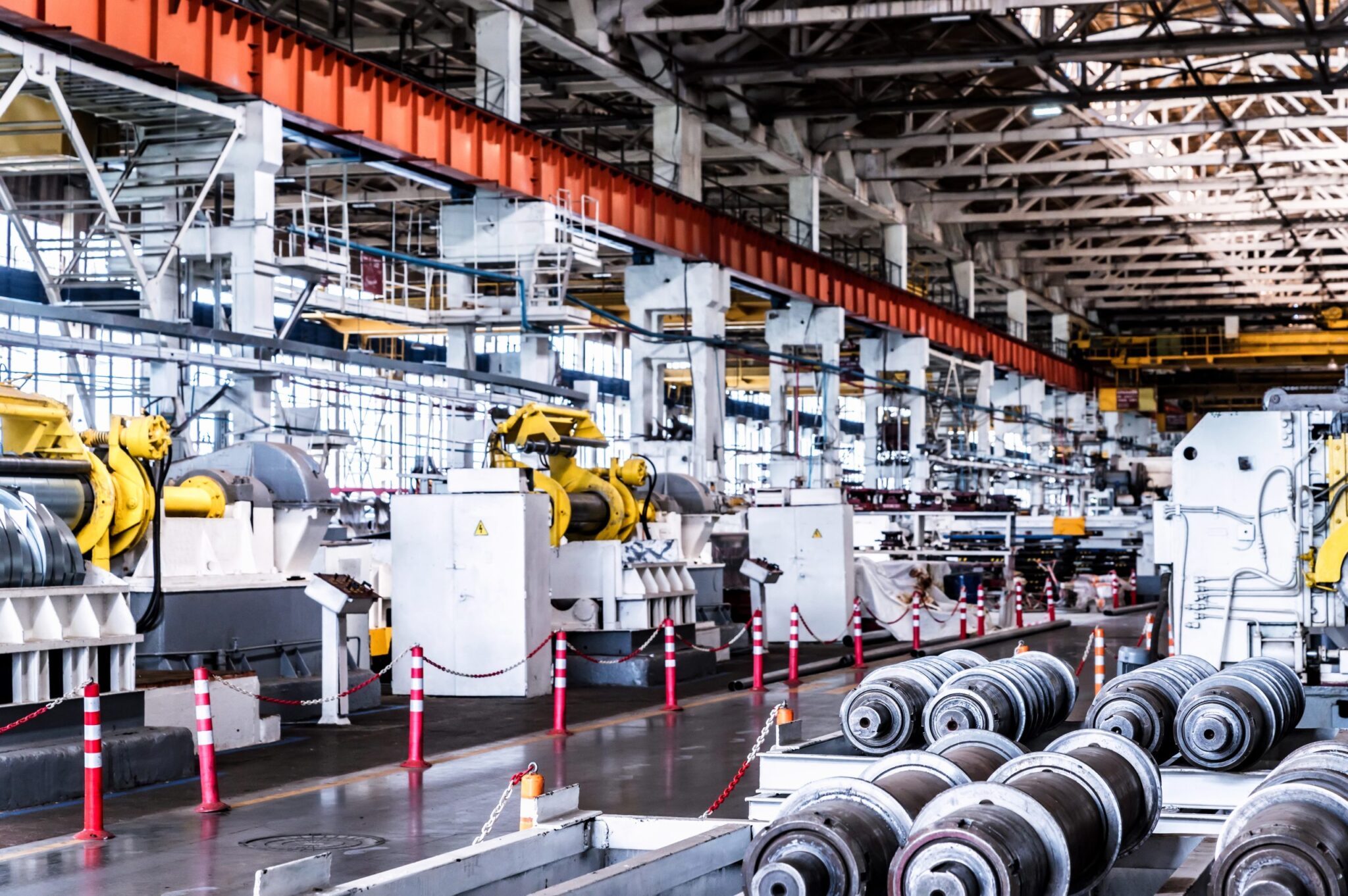
How to Size An Air Compressor For Industrial Use
October 31, 2022
Go Green with Energy Efficient Air Compressors
November 8, 2022Reduce energy costs: four tips for plant managers
Kaishan USA | November 2, 2022 | Uncategorized
As a manufacturer, we tend to focus on the energy-saving benefits afforded by the right air compressor. And in fact, we wrote a blog previously "Go Green with Energy Efficient Air Compressors" addressing the issue.
But an air compressor doesn't operate in a vacuum (no pun intended). It's part of a more extensive system of tools and equipment that treat, store and distribute compressed air in your facility.
After the air is compressed, it needs to be filtered to remove moisture and impurities. It should be dried and stored for later use. And you’ll have to distribute it throughout the plant, adjusting the pressure and airflow to match the needs of each application the compressed air system is serving.
Each of these steps has its own unique contribution to the energy efficiency of your air compressor system. We've developed the four tips that follow to help you cut your system’s energy consumption.
Tip No. 1: Refrigerated Air Compressor Dryers Cost Less and Have Lower Energy Operating Costs Than Desiccant Dryers. Unless...
You can score significant energy savings over the life of your system just by choosing the right type of air dryer for a compressor.
There are two main types of air compressor dryers — refrigerated and desiccant. Each has distinct advantages, so it's best to assess the impact each would have on your facility.
We find that refrigerated dryers work well for most general manufacturing applications, yielding air with a pressure dew point between 38° and 50°F. They cost less to buy, operate, and maintain than desiccant alternatives.
As the name indicates, refrigerated dryers remove moisture from compressed air by reducing the temperature (thus condensing the water out of the air). A moisture separator and drain system inside the dryer removes the moisture.
There are two types of refrigerated dryers–cycling and non-cycling. Non-cycling dryers run continuously while cycling dryers can turn on/off to match system demand, which in turn saves energy. Cycling dryers cost more but the ROI can be quite short in most applications.
Non-cycling dryers have the lowest initial cost, while a cycling dryer is the most energy-efficient.
The second type, desiccant dryers, are especially useful in applications like life sciences, electronics, semiconductor, and food and beverage that require high-quality air or dew points as low as -100°F. As the name implies, they use porous beads to remove moisture from untreated air and are configured with two towers – one in operation while the other is regenerating.

Once again, there are several flavors of desiccant dryers: heated, heatless, and blower purge dryers. And while you would think heatless models are more energy efficient than heated dryers, guess again. They consume 15 to 18% of the treated airflow.
Heated desiccant dryers use heating elements and reduce the purge air by almost half. Initial cost is higher, but operating cost is much lower.
Blower purge dryers use both heating elements and a dedicated blower to operate. So they have even higher upfront costs than the other two types of desiccant dryers, but operating costs are lower.
So, to summarize:
-
- Refrigerated dryers cost less and have lower energy operating costs than desiccant dryers
- For most processes, refrigerated dryers are probably sufficient
- Desiccant dryers provide the driest air for critical applications, but they have higher up-front and energy costs
- Desiccant dryers are also the best choice where piping is exposed to harsh conditions, such as temperatures that are below 40°F
- For smaller applications or point-of-use drying, you may want to consider a heatless model because of its lower initial cost
Tip No. 2: With Compressed Air Filters, Cleanliness Is Next To Godliness
A cubic foot of air can contain millions of dirt particles, water, and oil. If you filter out these impurities, you can prevent contamination and premature wear, helping to ensure smooth, trouble-free operation of components like valves and cylinders. This process reduces maintenance costs, downtime, and energy consumption.
The healthcare industry has regulatory requirements you must follow in designing your compressed air system.
In addition, there are regulatory requirements, once again, in industries like healthcare and aviation.
You can get different grades of compressed air filters to match the requirements of your application, removing solid particles, liquid water, water and oil vapors, odorants, and even bacteria and viruses. These distinctions are captured in the filter classes established by ISO 8573-1:2010, a standard the international body adopted in 2010. Filters are rated from 1 through 9, plus X, with the lower numbers achieving higher levels of air purity. You’ll want to cascade filters – using coarser filters upstream to catch the larger particles that would prematurely clog a finer filter downstream.
The critical consideration for filters is maintenance. Clogged filters will impede and eventually block airflow, causing energy loss that is both unnecessary and avoidable. So you’ll need to replace filter elements regularly.
How often? A lot depends on the quality of the supply air and how many hours you operate your system. One approach is to replace the filter elements every few months. A better choice is to install differential pressure sensors, which will detect any pressure change between a filter's supply and output pressures. For example, a pressure drop would indicate the filter is becoming clogged and needs to be replaced.
Tip No. 3: Use a Smart Combination of Wet and Dry Compressed Air Tanks
You can also increase the efficiency of your air compression system by properly sizing your air receiver tanks and using the right combination of wet and dry storage. Generally, most experts recommend having three to five gallons of air storage capacity per CFM of air compressor output.
However, systems with very steady airflow – without frequent high bursts of demand – don’t need that much stored air. Maybe no more than two gallons per CFM of air compressor capacity. Conversely, facilities with high variability in airflow and significant peaks in demand may require more air storage air to keep up. You’ll want to determine your peak demand to know for sure.
Wet Vs. Dry Compressed Air Tanks
Compressed air can also be stored “wet” or “dry,” with wet storage tanks located before the air drying system and dry tanks located after the dryers.
The big advantage of dry storage is that it offers compressed air ready for use right out of the tank. That reduces the risk that high-demand events will push demand beyond the air dryer’s capacity.
Wet storage, however, allows excess water and lubricant to condense out of the system before it hits the filter and dryer. It thus increases the energy efficiency of your air dryer and prolongs the life of the pre-filter element. Plus, it eliminates the pressure drop on the air dryer side of the system that occurs with dry storage.
A critical component for the wet tank is to ensure you have a working drain trap to drain the moisture and contaminants that the wet tank captures. A no-loss drain is advisable to ensure you do not waste the compressed air being stored.
Most facilities have a combination of wet and dry storage, with a third of storage capacity as wet storage and two-thirds dry.

Tip No. 4: It’s All in the Pipes!
Most people immediately think of piping when considering air distribution, often zeroing in on material selection. And while metal pipe is clearly the best choice, there are nuances in deciding among black iron, copper, stainless steel, or extruded aluminum alloy.
A few quick observations:
-
- Black iron: Usually the starting point because of price and durability. But it will corrode when exposed to moisture, with pieces flaking off and contaminating the airflow. Some facilities move up to galvanized steel, but even this material will ultimately corrode.
- Copper: The choice most often for sensitive systems. Sized and installed correctly, it is very durable.
- Stainless steel: Relatively lightweight and corrosion resistant, but it requires skilled labor for welding.
- Extruded aluminum alloy: corrosion resistant and so easy to install that it can be moved quickly to adapt to changes in plant layout.
But beyond the selection of materials, many facility managers miss two important considerations – pipe sizing and layout.
Pipe Sizing
A properly sized pipe is a critical piece of any distribution compressed air system. If the piping is too small, your system will be inefficient and consume more energy. Pressure will drop, and your compressor will be overworked, causing additional wear and maintenance.
Piping Layout
The layout of the compressed air piping in your plant can significantly impact your system's operation. A faulty design will increase energy costs, equipment failure, production losses, and maintenance. Meanwhile, investing in a well-crafted layout will have substantial payback over the life of the system.
It’s usually best to start with a loop system, in which the air flows in two directions. This design reduces pressure drop throughout the system and ensures the full airflow arrives at all your equipment downstream.
Your primary goal will be reducing turbulence, the interrupted airflow that happens when the flowing air needs to navigate around direct interference, like sharp turns or changes in direction, or indirect interference, like weak velocity, improperly sized pipe, or obstructions.
Plus, it’s a good idea to add a bypass system that ensures uninterrupted operation when the system needs maintenance or repairs.

Saving Energy: We Can Help!
Obviously, saving energy in your air compression system is not a once-and-done thing, but it is rather an ongoing activity. Talk to the experts at Kaishan about how we can help you figure out what will work best for you. Contact us today.
Random stat or
customer quote
textXXtext
text

